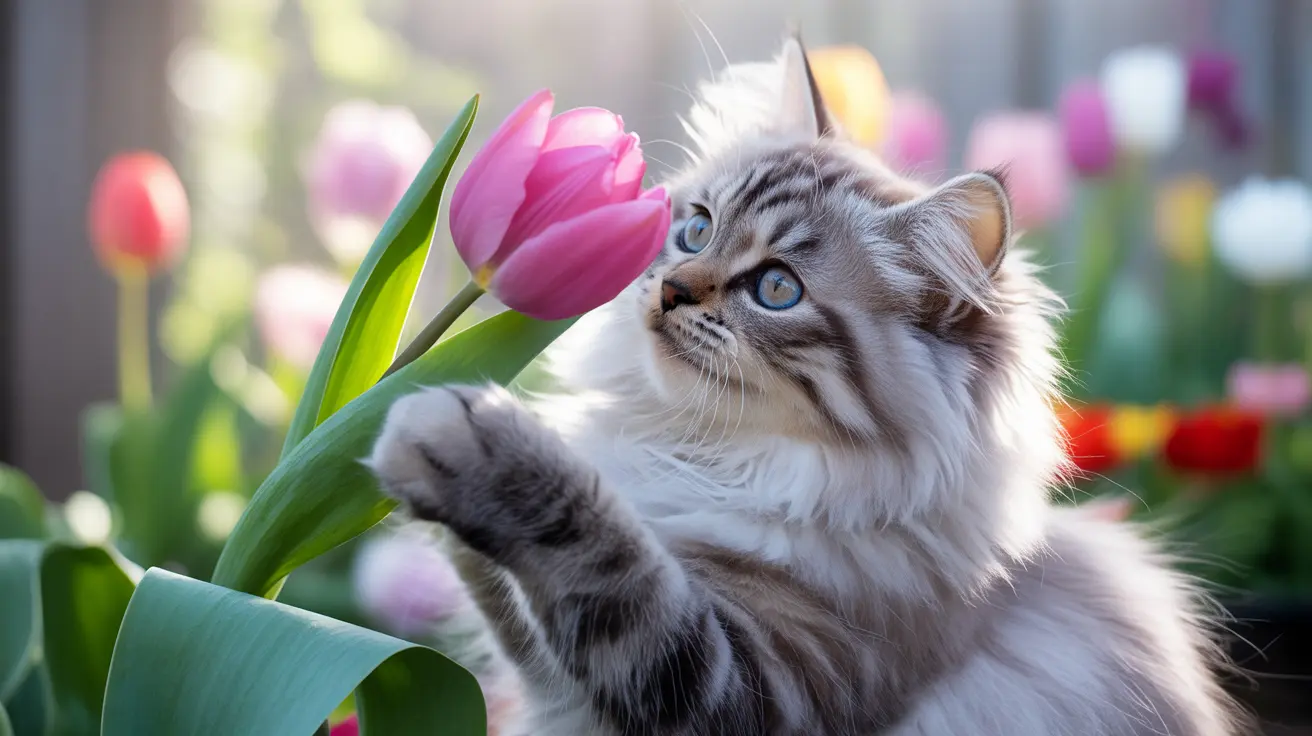If you're a cat owner who loves decorating with fresh flowers, you need to know about the serious risks tulips pose to your feline friend. These popular spring flowers may be beautiful, but they contain dangerous toxins that can harm your cat. Understanding the risks and symptoms of tulip poisoning could save your pet's life.
From their vibrant petals to their buried bulbs, every part of the tulip plant contains potentially harmful compounds. Let's explore why these flowers are dangerous, what symptoms to watch for, and how to keep your cat safe.
Understanding Tulip Toxicity in Cats
Tulips contain several toxic compounds, with tulipalin A and B being the most dangerous. These substances, along with sharp calcium oxalate crystals, can cause severe reactions in cats. The bulbs are particularly toxic, containing the highest concentration of these harmful compounds.
While cats don't typically seek out plants to eat, their curious nature might lead them to nibble on tulip leaves or flowers. Even minimal contact with these plants can trigger adverse reactions.
Signs of Tulip Poisoning in Cats
Immediate Symptoms
The first signs of tulip poisoning often appear within hours of exposure and may include:
- Excessive drooling
- Oral irritation
- Pawing at the mouth
- Vomiting
- Loss of appetite
Severe Symptoms
If your cat consumes a larger amount of tulip, particularly the bulb, they might experience:
- Severe gastrointestinal upset
- Difficulty breathing
- Irregular heartbeat
- Tremors or seizures
- Depression and lethargy
Emergency Response and Treatment
If you suspect your cat has ingested any part of a tulip, immediate action is crucial. Contact your veterinarian or an emergency animal hospital right away. Don't wait for symptoms to appear or worsen.
Treatment typically involves:
- Decontamination procedures
- IV fluid therapy
- Supportive care for symptoms
- Monitoring of vital signs
- Anti-nausea medication as needed
Prevention and Safe Alternatives
The best way to protect your cat is through prevention. Consider these safety measures:
- Keep tulips out of your home or in completely cat-proof areas
- Choose pet-safe alternatives like spider plants or Boston ferns
- Create barriers around outdoor tulip gardens
- Monitor your cat when outdoors
- Educate family members about the risks
Frequently Asked Questions
What parts of tulips are toxic to cats and which part is the most dangerous?
All parts of the tulip plant are toxic to cats, including flowers, leaves, and stems. However, the bulb contains the highest concentration of toxins and is therefore the most dangerous part.
What symptoms should I watch for if my cat has ingested tulips?
Watch for drooling, vomiting, diarrhea, lethargy, and difficulty breathing. In severe cases, your cat may experience tremors, seizures, or irregular heartbeat.
How quickly do tulip poisoning symptoms appear in cats after exposure?
Symptoms typically appear within a few hours of exposure, with oral irritation and drooling often being the first signs.
What immediate steps should I take if my cat eats a tulip?
Contact your veterinarian or emergency animal hospital immediately. Don't wait for symptoms to develop or try home remedies. If possible, bring a sample of the plant to help with identification.
What are some safe plant alternatives to tulips for homes with cats?
Safe alternatives include spider plants, Boston ferns, Swedish ivy, and cat grass. Always verify plant safety through resources like the ASPCA's toxic plant database before bringing new plants into your home.
Remember, while tulip poisoning is rarely fatal when treated promptly, prevention is always better than cure. By being aware of the risks and taking appropriate precautions, you can ensure your cat stays safe while still enjoying a beautiful home environment.






